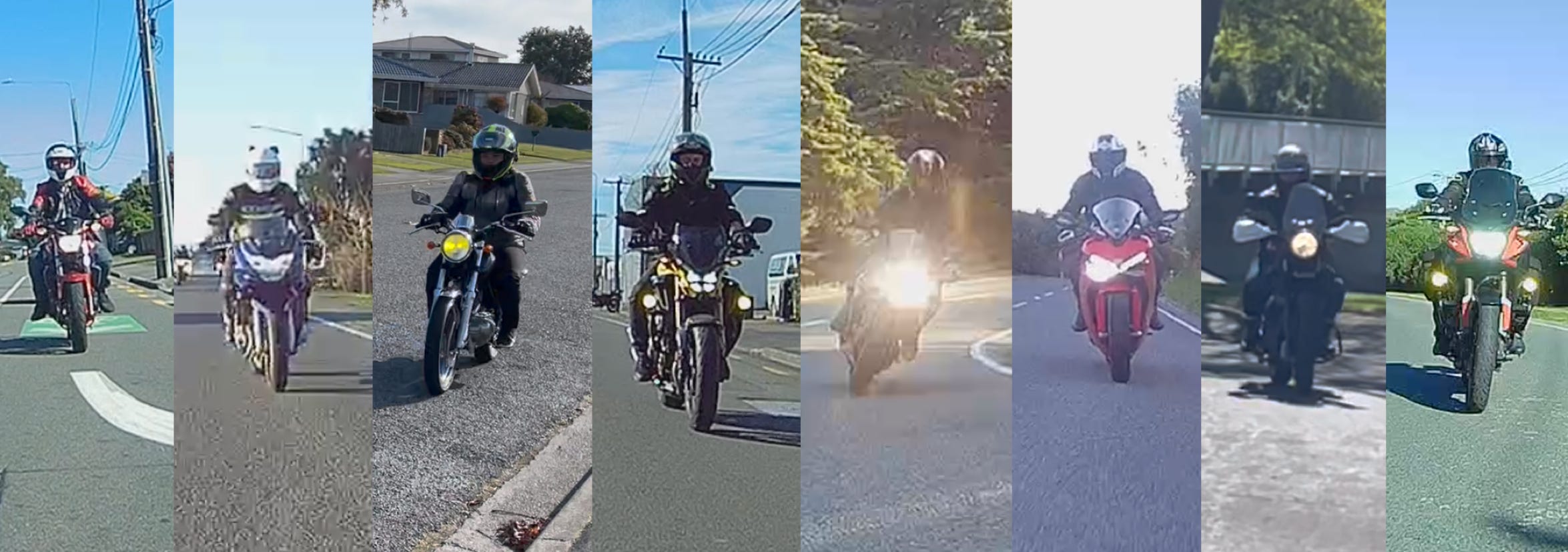A long list of actions required with explanations, let it begin!
Original NZTA link provided
When performing the riding tasks for a licence assessment, your performance is assessed against the competency categories below.
Failure to display the appropriate behaviour(s) or skills will result in a fault being recorded.
Looking
Explanation
Requirements
Scanning/mirrors
Explanation
Requirements
Head check
Explanation
Requirements
Communication (TUG)
Explanation
Requirements
- activating the signal too early; or
- not cancelling the signal after completing the manoeuvre.
Consideration/courtesy
Explanation
Rider displays appropriate attitude in relation to the way they interact with other road users.
Requirements
Does not display any behaviour that shows a clear lack of consideration or courtesy when interacting with other road users.
Positioning
Explanation
Requirements
Speed management
Explanation
Requirements
Progression
Explanation
Requirements
** Filtering - relates to moving through traffic travelling in the same direction (that is stopped) by travelling between the lanes.
- at traffic lights when the applicable signal has turned green; or
- at an intersection where all the vehicles to which the rider is required to give way to have cleared the intersection; or
- vehicles queued in front of the rider have moved off.
Stability/smoothness
Explanation
Requirements
Following distance
Explanation
Requirements
Other illegal
Explanation
Requirements
Immediate failure errors are serious riding errors that compromise safety.
Any one immediate failure error recorded during the assessment will result in immediate termination and failure of the assessment.
Below lists the categories of immediate failure errors and provides a description of the corresponding fault.
Fault
Falls off
You fall off or have a significant loss of control.
Obey
You’re unable, because of lack of riding ability, to carry out a riding task required by the assessor.
Intervention
The assessor provides verbal or physical assistance to you while the assessment is in progress (eg to prevent a collision or prevent the development of an unsafe situation).
Leaving lane
Your lateral position is either too close to, or over the centre line (unless overtaking), or you cross no passing lines (solid yellow lines) at any time.
Give way
You fail to give way to other road users when required to do so, resulting in another road user having to take evasive action. This includes pedestrians on, or obviously waiting to cross at, a pedestrian crossing.
Excessive speed
You exceed the speed limit for more than 10 seconds.
Collision
You hit or mount the kerb or touch any stationary object (such as a sign, fence, pole, tree or rubbish bin) or touch any vehicle or road user (pedestrian or cyclist).
Note – you are not penalised in the following situations:
• if your tyre contacts the kerb (without mounting the kerb) when parking perpendicular to the kerb
• if your motorcycle collides with another vehicle or road user and the collision is the fault of the other road user and you did not
contribute to the collision.
Fail to stop
You do not come to a complete stop at a stop sign (with one foot on the ground) before proceeding.
You fail to stop when required to do so at:
• a red or yellow traffic light; or
• a railway level crossing.
Dangerous position
You stop the motorcycle in a dangerous position, eg intruding into or blocking a pedestrian crossing or an area controlled by pedestrian traffic signals resulting in a pedestrian having to take evasive action (ie stop, slow, turn back, hurry, or diverge around the vehicle).
When waiting to turn you stop in a position that blocks the path of oncoming traffic.
When giving way at an intersection you intrude into the intersecting traffic stream.
You stop on a cross- hatched clear zone (cross-hatched yellow lines).
You stop on a railway crossing.
You enter an intersection when your passage or exit is blocked by stationary traffic.
Other dangerous action
Any other riding action not covered by other immediate failure errors that will either:
• cause another road user to take evasive action
• cause immediate danger to road users or property
• unnecessarily increase the risk of collision.
Contact Moto Agent Helper
EMAIL: assist@motoagenthelper.com
FACEBOOK https://facebook.com/motoagenthelper
“Ride better every day” - Moto Agent Helper
